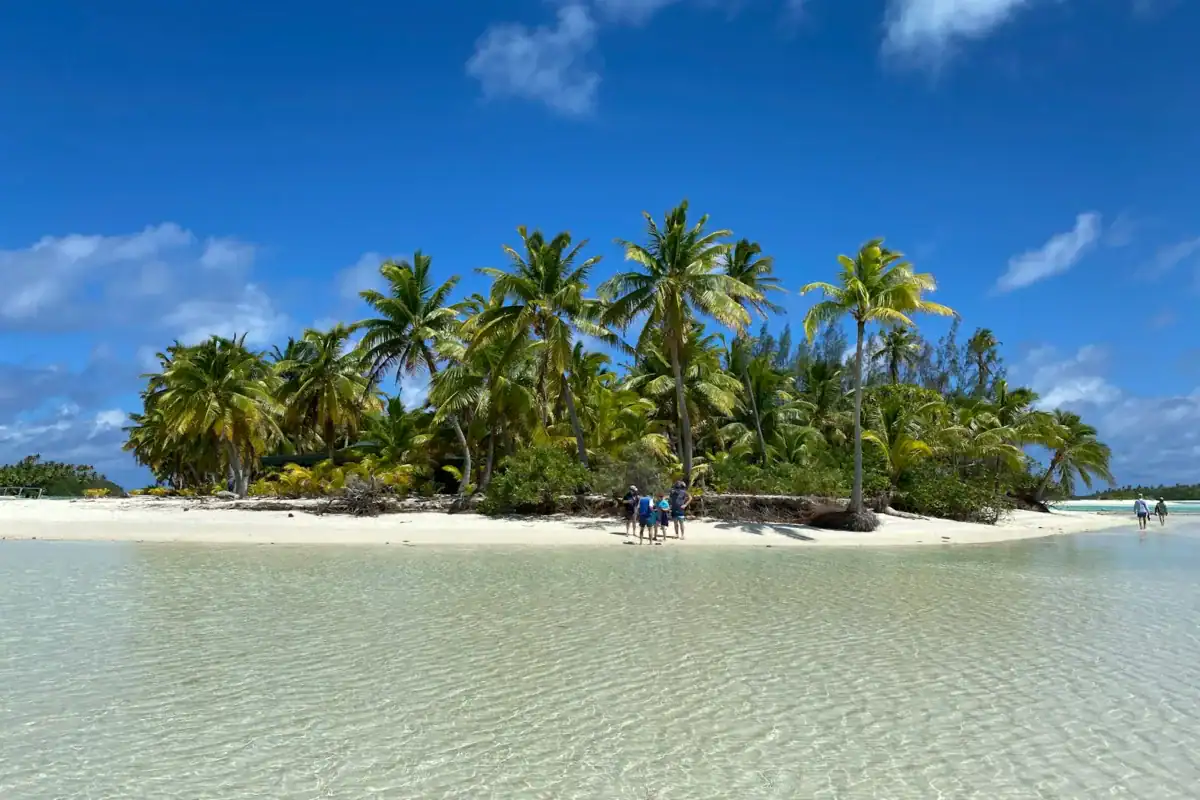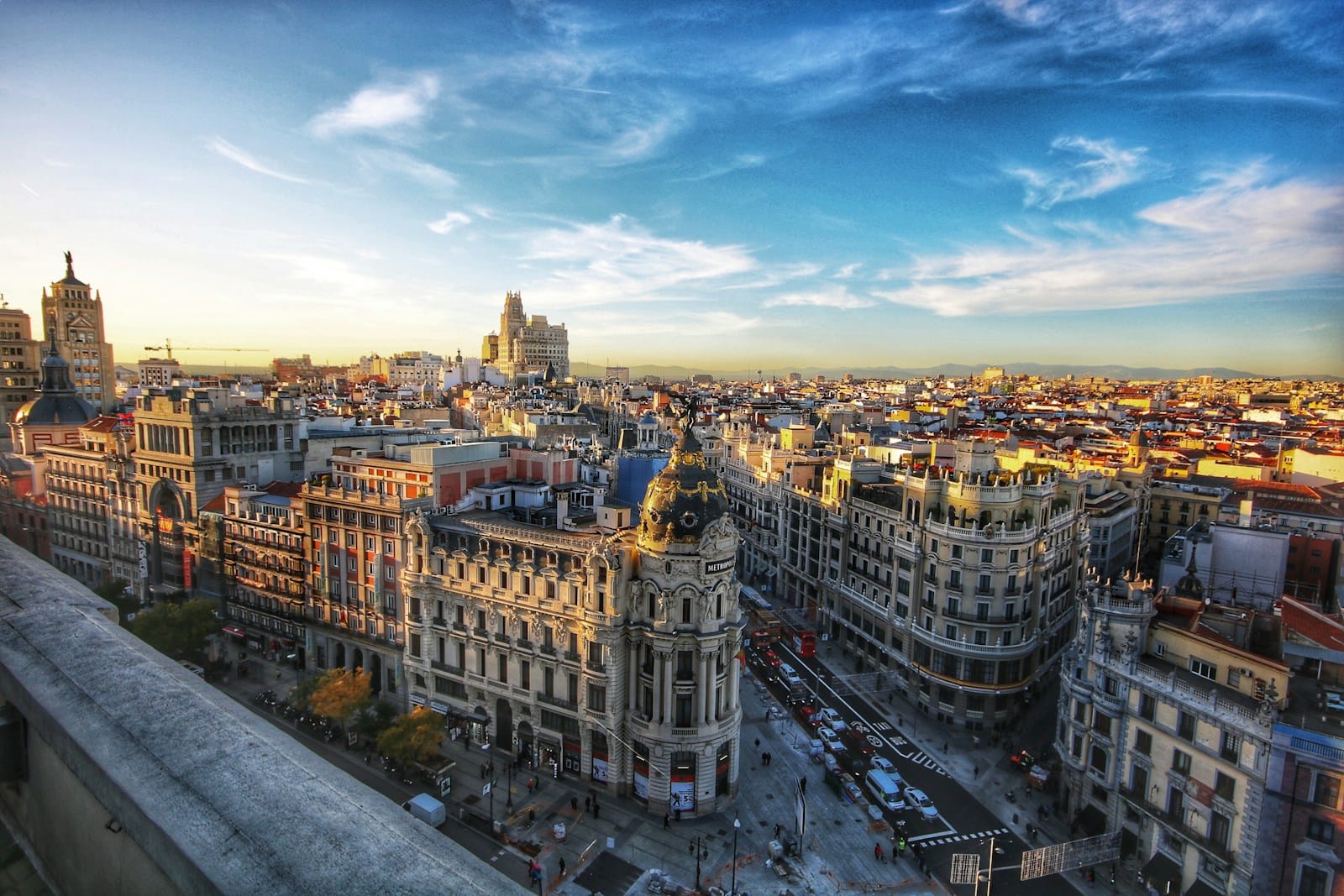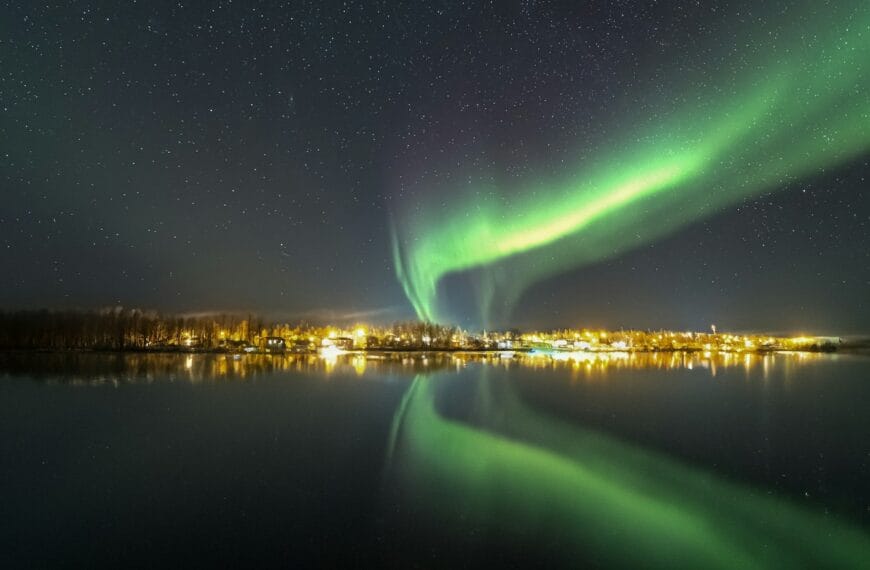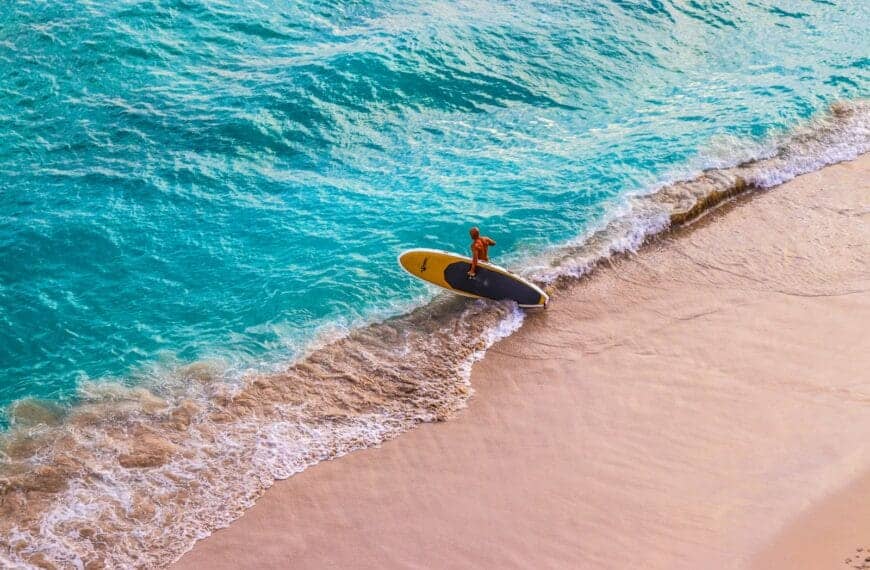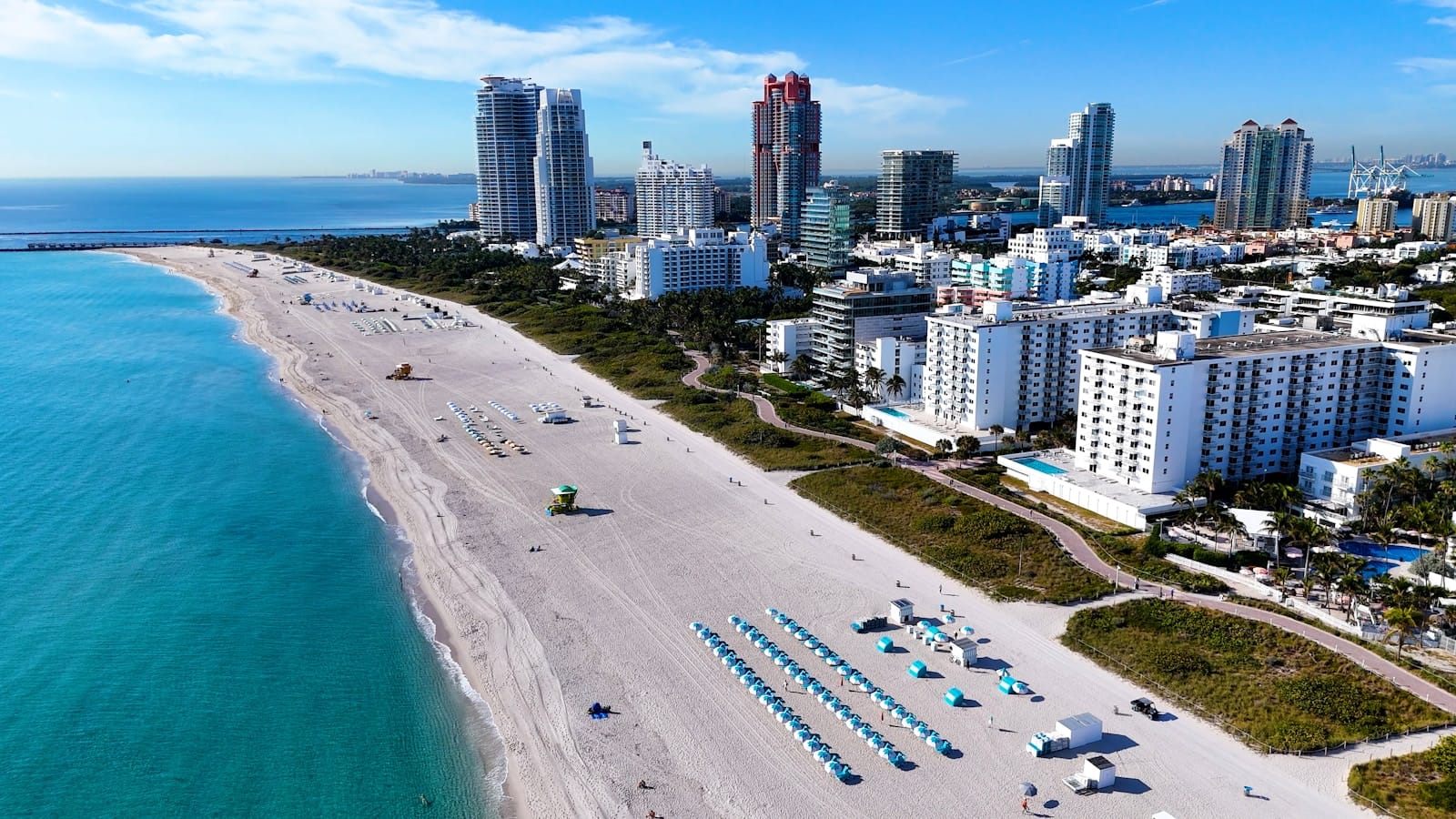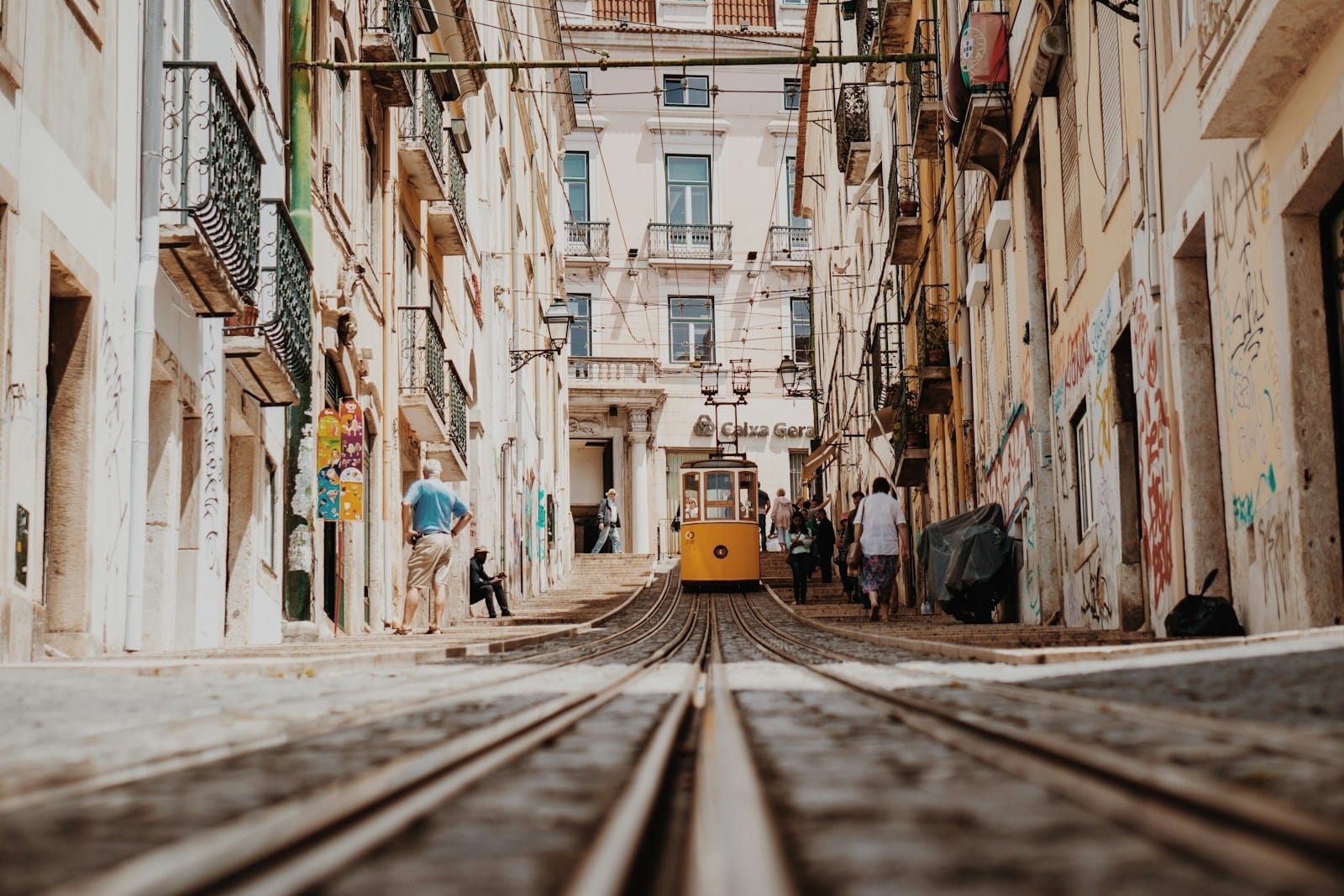Cook Islands Travel Guide: Tropical Paradise Unveiled
Intro to Cook Islands Travel Guide
Scattered like emeralds across the heart of the South Pacific, the Cook Islands are a dreamscape of turquoise lagoons, coral atolls, and lush volcanic peaks. Blending Polynesian heritage with laid-back island life, this self-governing territory offers travelers a chance to slow down, connect with nature, and experience culture that feels both timeless and warm. Whether you’re seeking luxury overwater bungalows, remote beaches, or village festivals, the Cook Islands deliver beauty with authenticity.
Start your journey with our Cook Islands Travel Guide and discover everything this island nation has to offer — from barefoot lagoon strolls and reef snorkeling to cultural feasts and starlit dances.
Where to Go in Cook Islands
Aitutaki | Atiu | Mangaia | Manihiki | Mauke | Mitiaro | Nassau | Palmerston | Penrhyn | Pukapuka | Rakahanga | Rarotonga
💡Quick Facts:
Destination: Cook Islands
Continent: Oceania
Country: Cook Islands (self-governing in free association with New Zealand)
Administrative Division: 15 islands in Northern & Southern groups
Area: 236 km²
Population: ~17,000
Density: ~72/km²
Capital: Avarua (on Rarotonga)
Regions/Subregions: Southern Group (Rarotonga, Aitutaki, Mangaia, Atiu, Mauke, Mitiaro, Palmerston, Manuae, Takutea). Northern Group (Manihiki, Nassau, Penrhyn, Pukapuka, Rakahanga, Suwarrow).
Official Languages: English, Cook Islands Māori (Rarotongan)
Currency: New Zealand Dollar (NZD, $) and Cook Islands Dollar (pegged to NZD)
Time Zone: CKT (UTC-10, no daylight savings)
Airports: Rarotonga International Airport (RAR), Aitutaki Airport (AIT), Northern Group small airstrips
Climate: Tropical, warm year-round, wet season Nov–Apr
Known For: Aitutaki Lagoon, coral reefs, traditional Polynesian culture, overwater bungalows, whale watching
🛂Arrival Info:
Visa-free entry: up to 31 days for all nationalities (extendable up to 6 months).
Passport must be valid for at least 6 months beyond entry.
No ETAs required.
Direct flights from Auckland, Sydney, Honolulu, Los Angeles (limited).
Official entry info: Cook Islands Tourism
🏥Health Info:
No mandatory vaccines; Hepatitis A, Typhoid, routine vaccines recommended.
Dengue outbreaks possible in wet season.
Hospitals: Rarotonga Hospital (main), small clinics on outer islands.
Medical evacuation may be required for serious emergencies.
Travel insurance strongly recommended.
🚑 Check travel insurance options for travel emergencies, delays, and medical needs abroad — Get coverage here
💉 Stay Informed with Official Updates: WHO – International Travel & Health | CDC – Travel health updates
🚨Travel Advisory:
Generally very safe; low crime rates.
Petty theft rare but possible.
Cyclone season: November–April.
Check official advisories:
🌍Track Real-Time Official Updates: US Travel Advisory | UK Foreign Travel Advice | Government of Canada | NZ SafeTravel
🥳Holidays:
Constitution Day (4 August): Celebrates self-government.
Te Maeva Nui (July–August): Cultural festival with dance, music, crafts.
Christmas Day (25 December): National holiday.
New Year’s Day (1 January).
💰Visitor Info:
Currency: NZD and Cook Islands Dollar accepted interchangeably.
ATMs limited to Rarotonga and Aitutaki.
Credit cards accepted in resorts; cash preferred on outer islands.
Tipping not customary.
Daily budget:
Budget: NZD 70–120
Midrange: NZD 150–300
Luxury: NZD 350+
🛫Airports:
Rarotonga International (RAR): Main hub, direct flights to NZ, Australia, U.S.
Aitutaki (AIT): Domestic flights from Rarotonga, scenic lagoon access.
Northern Group: small airstrips, limited service by Air Rarotonga.
🧳 Delayed or canceled flight? Check if you’re eligible for compensation
🚍Transport:
Rarotonga: island bus service, taxis, car/motorbike rentals.
Aitutaki: limited taxis, rental scooters.
Inter-island flights: Air Rarotonga connects Rarotonga, Aitutaki, Atiu, Mangaia.
Inter-island ferries: limited, long travel times.
Driving: left-hand traffic, visitors need Cook Islands Visitor’s License (issued with overseas license).
🚗 Book reliable airport transfers and in-city rides in advance. Reserve your ride here
🛰️Connectivity:
SIM/eSIM: Vodafone Cook Islands.
Wi-Fi available in hotels/resorts, slower than global standards.
Data expensive; prepaid packages at airport or Vodafone shops.
Public hotspots available in Rarotonga.
🛜 Stay connected abroad with affordable eSIM data packs. Get your eSIM here
📜Laws & Etiquette:
Legal drinking age: 18.
Dress modestly in villages and churches; beachwear for resorts only.
Sunday is a rest day: limited transport and business closures.
Respect local customs at marae (sacred sites).
👮Emergency Info:
Emergency number: 999 (police, ambulance, fire).
Rarotonga Police: +682 22 499.
Rarotonga Hospital: +682 22 664.
NZ High Commission in Rarotonga: +682 22 201.
🏛️ Use embassy locator tools: Embassies Worldwide
🌞Weather:
Warm year-round: avg 23–30°C.
Dry season: May–Oct, best for travel (sunny, less humid).
Wet season: Nov–Apr, hot, humid, risk of cyclones.
Peak travel: June–August, December holiday season.
🌦️ Stay prepared—check the weather forecast for your destination — Weather Forecast
Cook Islands Cities and Major Destinations
Though small in size, the Cook Islands consist of 15 islands spread across 2 million square kilometers of ocean, divided into the Southern Group and Northern Group. Each island has its own rhythm and appeal, offering travelers options from bustling hubs to untouched escapes.
Rarotonga
- The beating heart of the Cook Islands, Rarotonga is the main entry point and most developed island. It’s ringed by a coastal road, with towering peaks in the center and a protective lagoon wrapping around its shores. Known for its lively markets, hiking trails, and snorkeling spots, Rarotonga mixes modern conveniences with deep-rooted tradition. Don’t miss the Punanga Nui Market, Te Rua Manga (The Needle) hike, and lagoon cruises.
Aitutaki
- Often hailed as one of the most beautiful lagoons in the world, Aitutaki is a turquoise wonder dotted with sandy motus (islets). Travelers flock here for its postcard-perfect scenery, overwater bungalows, and day trips to the iconic One Foot Island. Aitutaki is quieter than Rarotonga, making it ideal for honeymooners and travelers chasing romance and tranquility.
Atiu
- Nicknamed “Enuamanu” or “Land of the Birds,” Atiu is rugged and less visited, appealing to eco-travelers. Its dense forests, limestone caves, and coffee plantations offer a raw, off-the-beaten-path vibe. Birdwatching, guided cave tours, and village homestays connect travelers to nature and community life.
Mangaia
- The oldest island in the Pacific, Mangaia rises in dramatic terraces known as makatea. Remote and sparsely populated, it offers visitors pristine limestone caves, fishing villages, and an untouched atmosphere. For those seeking authenticity, Mangaia feels like stepping back in time.
Mauke
- Called “The Garden Island,” Mauke is blanketed with tropical flowers, taro fields, and quiet coastal coves. Known for its friendliness, Mauke invites visitors into village life where weaving, traditional cooking, and fishing remain central.
Mitiaro
- This small island, also called Nukuroa, is famous for its subterranean freshwater caves and pools. Travelers can swim in underground lakes like Vai Nauri and experience genuine rural hospitality.
Palmerston Island
- Unique for its English-descended community, Palmerston Island is remote and accessible mainly by boat. Visitors are rare but welcomed with open arms, often staying with local families.
Northern Group Islands
- These include Manihiki, Nassau, Penrhyn (Tongareva), Pukapuka, and Rakahanga. Known for black pearl farming (especially Manihiki), these islands are remote, rarely visited, and appeal to intrepid travelers seeking true isolation. Penrhyn, with its vast lagoon, is the largest atoll in the Cook Islands.
How to Choose Where to Go in Cook Islands
Each island offers something different, and where you go depends on what kind of traveler you are.
- If you’re seeking convenience and variety, Rarotonga is the best base. It has the widest range of accommodation, restaurants, and tours, plus easy access to hiking trails and beaches. Families and first-time visitors often start here.
- For romance and lagoon beauty, Aitutaki is unmatched. Its lagoon is considered one of the most stunning in the world, with islets perfect for private picnics and swimming. Honeymooners and couples often pair Rarotonga with a few nights in Aitutaki.
- For eco-adventures and cultural immersion, Atiu, Mangaia, Mauke, and Mitiaro provide authentic village stays, birdwatching, cave explorations, and community connections. These islands are less commercial and reward travelers who appreciate slow travel.
- If you’re drawn to true remoteness and cultural preservation, the Northern Group — like Pukapuka or Penrhyn — is ideal. These islands require more effort to reach and are for seasoned travelers who want untouched Polynesian life.
Natural Escapes and Scenic Highlights
The Cook Islands are defined by their dramatic landscapes — volcanic peaks, coral atolls, and lagoons of luminous blue. Exploring nature here is an adventure in itself.
Te Rua Manga (The Needle), Rarotonga
- This volcanic plug is a striking landmark rising out of Rarotonga’s rainforest. Hike through lush valleys, listen to native birds, and reach panoramic viewpoints that stretch across the island.
Muri Lagoon, Rarotonga
- Crystal-clear and shallow, Muri Lagoon is perfect for kayaking, paddleboarding, and snorkeling. Small motus (islets) lie just offshore, easily accessible by boat or paddle.
Aitutaki Lagoon
- Perhaps the crown jewel of the Cook Islands, Aitutaki Lagoon glows with surreal turquoise water. Day cruises take visitors to motus like One Foot Island, where the sand is dazzlingly white and the snorkeling is world-class.
Ana Tangi and Other Caves of Atiu
- Atiu’s limestone terrain hides caves decorated with stalactites and stalagmites. Some, like Ana Tangi, hold cultural significance and stories of ancient rituals.
Vai Nauri, Mitiaro
- A subterranean freshwater pool beneath limestone rock, Vai Nauri is a hidden gem where travelers can swim in cool, clear water surrounded by stalactites.
Mangaia’s Makatea Cliffs
- Mangaia is ringed by raised coral cliffs, providing a rugged and dramatic coastline. These terraces offer breathtaking views and are ideal for guided nature walks.
Northern Atolls
- Penrhyn boasts the largest atoll in the Cook Islands, with a lagoon spanning 233 square kilometers. Manihiki’s deep lagoon is famous for black pearl farms, while Pukapuka preserves Polynesian traditions in a remote paradise.
Cultural and Historic Landmarks
The Cook Islands’ heritage is deeply rooted in Polynesian traditions, missionary history, and community pride. Exploring these sites gives travelers insight into the islands’ layered past.
Takamoa Mission House, Rarotonga
- Built in 1842 by the London Missionary Society, this is one of the oldest structures in the South Pacific. It reflects the arrival of Christianity and its lasting influence on island life.
Arai-Te-Tonga Marae, Rarotonga
- An ancient ceremonial site, this marae was once the political and spiritual center of Rarotonga. Standing stones mark where chiefs gathered, and today it’s a place of cultural remembrance.
Cook Islands Library and Museum, Rarotonga
- This small but fascinating museum in Avarua preserves traditional tools, costumes, and artifacts, offering context to the islands’ pre-colonial and colonial eras.
Atiu’s Caves and Burial Sites
- Many limestone caves on Atiu hold archaeological and spiritual significance. Some contain ancient burials, linking present-day communities to their ancestors.
Mangaia’s Cultural Villages
- Known for preserving old Polynesian customs, Mangaia’s villages showcase traditional weaving, fishing, and storytelling. Attending a cultural gathering here feels like stepping into a living museum.
Manihiki Pearl Farms
- In the Northern Group, Manihiki is celebrated for its black pearls, considered some of the finest in the world. Visitors can see how pearls are cultivated and learn about their economic and cultural importance.
Local Food, Arts, and Regional Experiences
Life in the Cook Islands revolves around food, family, and celebration. Travelers are warmly welcomed into these rhythms through dining and festivals.
Must-Try Dishes
- Ika Mata: Raw fish marinated in coconut cream, lime, and vegetables — the national dish and a refreshing island classic.
- Rukau: Taro leaves cooked in coconut cream, often compared to Polynesian spinach.
- Umukai Feasts: A traditional underground oven meal where meats, fish, and root crops are slow-cooked and shared during celebrations.
Markets and Food Culture
- The Punanga Nui Market in Rarotonga is the epicenter of island flavors. From fresh tropical fruit to grilled fish, it’s a social hub where visitors mingle with locals on Saturday mornings.
Festivals and Dance
- The Te Maeva Nui Festival each August celebrates independence with drumming, dancing, and elaborate costumes. Cook Islands dancing — fast hip-shaking performed to thunderous drums — is both mesmerizing and integral to cultural identity.
Arts and Crafts
- Local artisans are known for weaving mats, hats, and baskets from pandanus and coconut fibers. Tivaevae quilts, colorful hand-sewn patchworks, are treasured gifts that reflect Polynesian artistry.
Community Experiences
- On smaller islands like Atiu and Mauke, visitors are often invited into homes to share meals, learn traditional cooking, or join fishing expeditions. These moments highlight the generosity and hospitality that define Cook Islands culture.
Must-See Experiences in Cook Islands
The Cook Islands are full of adventures that linger long after you’ve left. From turquoise lagoons to cultural encounters, here are the experiences travelers remember most.
Lagoon Cruise in Aitutaki
- Spend a day sailing across Aitutaki’s legendary lagoon, stopping at tiny motus like One Foot Island. Swim in surreal blue waters, snorkel with colorful fish, and enjoy a barbecue lunch on the sand.
Cross-Island Trek on Rarotonga
- Guided hikes from north to south reveal the island’s volcanic heart. Pass lush valleys, streams, and climb to Te Rua Manga (The Needle) for a panoramic view over forest and reef.
Cultural Performance and Island Night
- Rarotonga and Aitutaki host “island nights,” combining umu feasts with drum-driven dance. These evenings are immersive showcases of Cook Islands heritage and community pride.
Birdwatching on Atiu
- Nicknamed the “land of birds,” Atiu is home to rare species like the Kopeka, which navigates caves using sonar clicks. Guided tours lead travelers through forests and limestone caverns alive with wildlife.
Snorkeling in Muri Lagoon
- Calm, shallow, and teeming with fish, Muri Lagoon is ideal for families and beginners. Kayaks and paddleboards allow easy access to motus, while glass-bottom boats offer relaxing ways to spot marine life.
Diving Among Shipwrecks and Reefs
- Both Rarotonga and Aitutaki offer exceptional diving. Explore coral gardens, reef walls, and the Mataora shipwreck, where marine life thrives.
Village Homestays on Outer Islands
- Staying in a family home on islands like Mauke or Mangaia offers more than accommodation — it’s an entry into traditional life, with shared meals, storytelling, and a deep sense of community.
Book immersive Cook Islands tours and experience unforgettable things to do in Cook Islands — from lagoon cruises and cultural performances to volcanic treks and pearl farm visits.
Getting Around Cook Islands
Though spread across the Pacific, the Cook Islands are surprisingly navigable with a mix of local transport and inter-island travel options.
Getting Around Rarotonga
Rarotonga has a single main road that loops around the island, making transport simple. Visitors can:
- Take the island bus: Two buses circle Rarotonga — one clockwise, the other counter-clockwise. Affordable and scenic, they’re the easiest way to get around.
- Rent scooters or cars: Popular for independence and flexibility. Scooters require a Cook Islands driver’s license, which can be obtained locally.
- Taxis and shuttles: Readily available, though pricier than buses. Many resorts also provide transfers.
Traveling Between Islands
Air Rarotonga connects Rarotonga with Aitutaki, Atiu, Mangaia, Mauke, and Mitiaro through short flights. For longer distances, like to the Northern Group, chartered flights or infrequent boats are the only options. Aitutaki also has day-trip packages from Rarotonga, including scenic flights.
On Outer Islands
Transport is limited but intimate. Bicycles, scooters, and walking are the most common ways to explore. Visitors often rely on local hosts for rides between villages or attractions.
Pro tip: Book inter-island flights well in advance, especially during festivals or peak holiday seasons, as seats fill quickly.
Best Time to Visit Cook Islands
The Cook Islands enjoy a tropical climate with warm weather year-round, but seasons influence experiences.
May to October – Dry Season (Peak Travel Time)
Cooler temperatures (22–26°C), low humidity, and minimal rainfall make this the most popular period. Ideal for beach holidays, snorkeling, and hiking. Events like the Te Maeva Nui Festival in August bring vibrant cultural celebrations.
November to April – Wet Season (Quieter and Lush)
Expect warmer temperatures (26–30°C), higher humidity, and tropical showers. While it’s cyclone season, storms are infrequent. This period means fewer crowds, greener landscapes, and lower accommodation rates.
Shoulder Months – April and November
Balanced conditions with pleasant weather and fewer tourists. Perfect for travelers who prefer quieter experiences but still want good snorkeling visibility and cultural activities.
Seasonal Tips
- Best balance: For most visitors, July through September combines perfect weather, festivals, and whale activity.
- Whale watching: Humpback whales migrate through Cook Islands waters between July and October.
- Festivals: Plan around cultural events like Te Maeva Nui (August) or island-specific celebrations that highlight local music and dance.
Best Travel Itineraries in Cook Islands
With 15 islands spread across the Pacific, itineraries depend on how much time you have. Whether you’re on a short getaway or an extended island-hopping trip, these plans help maximize your experience.
3-Day Highlights – Rarotonga Escape
- Day 1: Explore Avarua town, visit the Punanga Nui Market, and enjoy an evening island night with dance and feast.
- Day 2: Take a cross-island trek to Te Rua Manga and relax at Muri Lagoon in the afternoon.
- Day 3: Snorkel or dive in Rarotonga’s reefs, then unwind with a sunset beach walk.
5-Day Adventure – Rarotonga + Aitutaki
- Day 1–2: Discover Rarotonga’s cultural sites, markets, and lagoon activities.
- Day 3: Fly to Aitutaki; enjoy a scenic lagoon cruise with stops at motus.
- Day 4: Kayak, paddleboard, or simply relax on One Foot Island.
- Day 5: Return to Rarotonga for final shopping or a relaxed beach day.
7-Day Explorer – Island Combo
- Days 1–2: Rarotonga cultural experiences, markets, and reef snorkeling.
- Days 3–4: Aitutaki lagoon exploration and romantic islet picnics.
- Day 5: Travel to Atiu for birdwatching, caves, and village life.
- Day 6: Continue immersion in Atiu’s eco-adventures.
- Day 7: Return to Rarotonga for departure.
10-Day Immersion – Outer Islands and Beyond
- Days 1–3: Rarotonga — cultural landmarks, trekking, and Muri Lagoon adventures.
- Days 4–5: Aitutaki — lagoon cruises, snorkeling, and stargazing.
- Days 6–7: Atiu — caves, coffee plantations, and rare bird encounters.
- Days 8–9: Mangaia or Mauke — explore makatea cliffs, village life, and handicrafts.
- Day 10: Return to Rarotonga for final relaxation and farewell feast.
Traveler Tip: Extend your journey to the Northern Group for true remoteness. A visit to Manihiki’s pearl farms or Penrhyn’s vast lagoon is unforgettable for seasoned explorers.
Travel Safety and Cultural Etiquette in Cook Islands
The Cook Islands are among the safest destinations in the Pacific, but like any island nation, being prepared enhances your experience.
General Safety
Crime is rare, and locals are famously welcoming. Still, use common sense — lock scooters, keep valuables secure, and avoid leaving items unattended on beaches. Medical facilities are available on Rarotonga and Aitutaki, though smaller islands rely on basic clinics.
Adventure and Outdoor Safety
- Lagoon activities: Always check tides before swimming or kayaking. Currents beyond the reef can be strong.
- Hiking: Trails like the cross-island trek can be slippery after rain — use guides if unsure.
- Cyclone season: From November to April, monitor weather updates if traveling during the wet season.
Cultural Etiquette
- Respecting marae (sacred sites): These are important ancestral grounds — visit with guides and avoid climbing or disturbing stone structures.
- Dress modestly in villages: Swimwear is fine at beaches, but cover shoulders and legs when entering churches or local homes.
- Sunday traditions: Sundays are special. Many businesses close, and attending or observing a church service is a meaningful cultural experience.
- Photography: Always ask before taking photos of people or private property, especially during ceremonies.
Connectivity and Practical Tips
- Cash is king in villages and outer islands, though ATMs are available in Rarotonga and Aitutaki.
- Mobile coverage is strong on Rarotonga and Aitutaki but patchy on outer islands. Download offline maps before traveling.
- Internet is available, but slower and more expensive than in mainland destinations — embrace island time.
Nearby States or Provinces
The Cook Islands can be paired with other South Pacific gems, offering easy regional connections for extended journeys.
- French Polynesia (Tahiti & Bora Bora) – Just west of the Cook Islands, French Polynesia offers iconic overwater bungalows and volcanic peaks. Daily flights make it a natural extension for island-hopping.
- Samoa – With lush waterfalls, blowholes, and strong Polynesian culture, Samoa complements the Cook Islands with more rugged, adventurous landscapes.
- Tonga – Known as the “Friendly Islands,” Tonga offers humpback whale swimming (July–October) and an authentic, slower-paced Polynesian experience.
- New Zealand – Many Cook Islands flights connect through Auckland, making it easy to combine tropical beaches with New Zealand’s mountains, fjords, and Maori culture.
Related Guides:
French Polynesia Travel Guide | Samoa Travel Guide | Tonga Travel Guide | New Zealand Travel Guide
Final Planning Checklist for Cook Islands
Get trip-ready with these Cook Islands–specific planning essentials.
- Book inter-island flights early: Air Rarotonga seats are limited, especially for Aitutaki and Atiu.
- Reserve lagoon cruises in advance: Aitutaki day tours sell out quickly during peak months.
- Pack reef-safe sunscreen: Protect both your skin and the fragile coral ecosystems.
- Prepare for limited Wi-Fi: Download offline maps, books, or playlists before arrival.
- Carry cash for outer islands: Many villages do not accept cards.
- Bring insect repellent: Mosquitoes can be common, particularly after rain.
- Dress respectfully in villages: Carry a light sarong or cover-up for church and community visits.
- Check festival dates: Plan around Te Maeva Nui in August for cultural immersion.
- Plan whale watching: July–October is the window for spotting humpbacks off Rarotonga and Aitutaki.
- Allow buffer days: Weather can delay flights or ferries to remote islands.
The Cook Islands offer more than turquoise lagoons — they promise connection, culture, and calm. From vibrant Rarotonga to the untouched Northern Group, each island has a story waiting for you.
Visit our main travel hub for more expert tips and guides, and start planning your Cook Islands journey with confidence.

